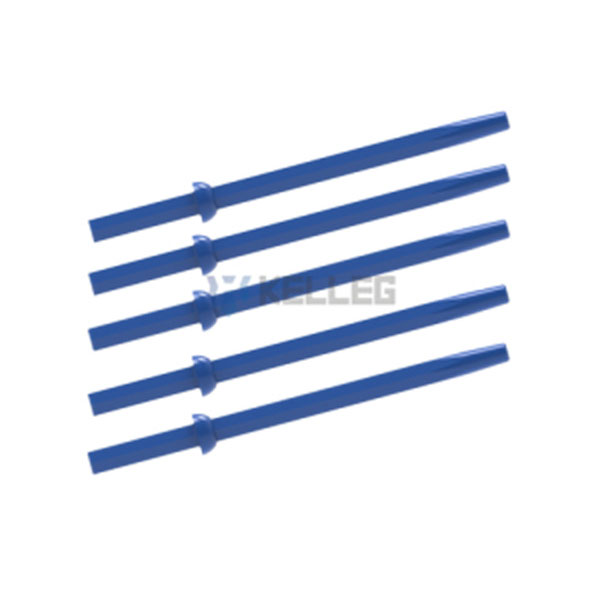2020 官网升级中!现在您访问官网的浏览器设备分辨率宽度低于1280px请使用高分辨率宽度访问。
The rock drill rod is a component that connects the drill bit and the shank adapter in the rock drilling system and transmits the driving force of the rock drill to the drill bit through the threaded connection to achieve the purpose of rock drilling. According to different application scenarios and customer needs, drill rods and drill bits have different classifications, but in terms of service life, drill rods will be longer than drill bits. Even so, drill rods will still appear in different failure states. Then, how to solve the failure of the drill rod? Today, we have summarized 11 common solutions for the failure of the drill rod for everyone to learn.

1. For the fatigue from the outer surface caused by using a hammer on stuck steel or the nick or dent on the surface layer, we should use the drill rod wrench to twist the stuck steel to loosen.
2. Due to the fatigue originating from the outer surface caused by improper care and handling, the surface layer of steel will be compromised by a nick or dent. The solution to this problem is storing rods in a rod rack carefully when retracting drill rods. Do not drop rods.
3. The solution to the fatigue originating in the bore caused by corrosion or corrosion caused by brine and other corrosive flushing agents is to evaluate if proper storage practices are being followed and change outer components more frequently or neutralize the flushing agent.
4. Wandering or drifting holes generate failure occurs where the coupling sleeve ends or above the thread radius. Typically, a solution to sudden failure is employing straight hole drilling devices or systems.
5. Worn threads or coupling sleeves. Migrating coupling sleeve (bridge worn out) generates failure occurs where the coupling sleeve ends or above the thread radius. Typically, a solution to sudden failure is replacing worn components. Do not put a worn coupling sleeve on a new rod. Change out your coupling sleeves with new rods.
6. Bending due to overfeeding generates failure occurs where the coupling sleeve ends or above the thread radius. Typically, a solution to sudden failure is monitoring feed force and tuning to rock conditions.
7. Bending due to misalignment generates failure occurs where the coupling sleeve ends or above the thread radius. Typically, a solution to sudden failure is to utilize alignment tools to monitor hole orientation once the hole has been collared. Replace wear pads on feed.
8. Heavy rotational loads caused by drilling with a dull bit and increased reflected stress generates failure occurs where the coupling sleeve ends or above the thread radius. Typically, a solution to sudden failure is resharpening bits when the wear flats appear 1/3 dull or discarding when carbide profile height is compromised.
9. Drilling in voids, seams or broken conditions generates failure occurs where the coupling sleeve ends or above the thread radius. Typically, a solution to sudden failure is to adjust drilling pressures and tunes to rock conditions.
10. Continued percussion when drill steel jams in void or seam generate failure occurs where the coupling sleeve ends or above the thread radius. Typically, a solution to sudden failure is to use a drill with anti-jam features. Reduce feed and percussion pressure.
11. Too much play in coupling. Drill steels improperly joined in coupling sleeve as a result of a thread or bridge wear generate chip broken off end of drill steel solution of replacing worn components.
Drill rods carry repeated pressure load cycles, resulting in fatigue failure is inevitable, but many failure states are also caused by improper handling. So regular maintenance and correct operation are very important for drill rods. In addition, if you want to extend the service time of the drill rod, you still need to analyze the failure causes according to the specific use conditions. Only in this way can the problem be solved basically.